Top African Safaris in Kenya: Best Itineraries and Costs for 2025
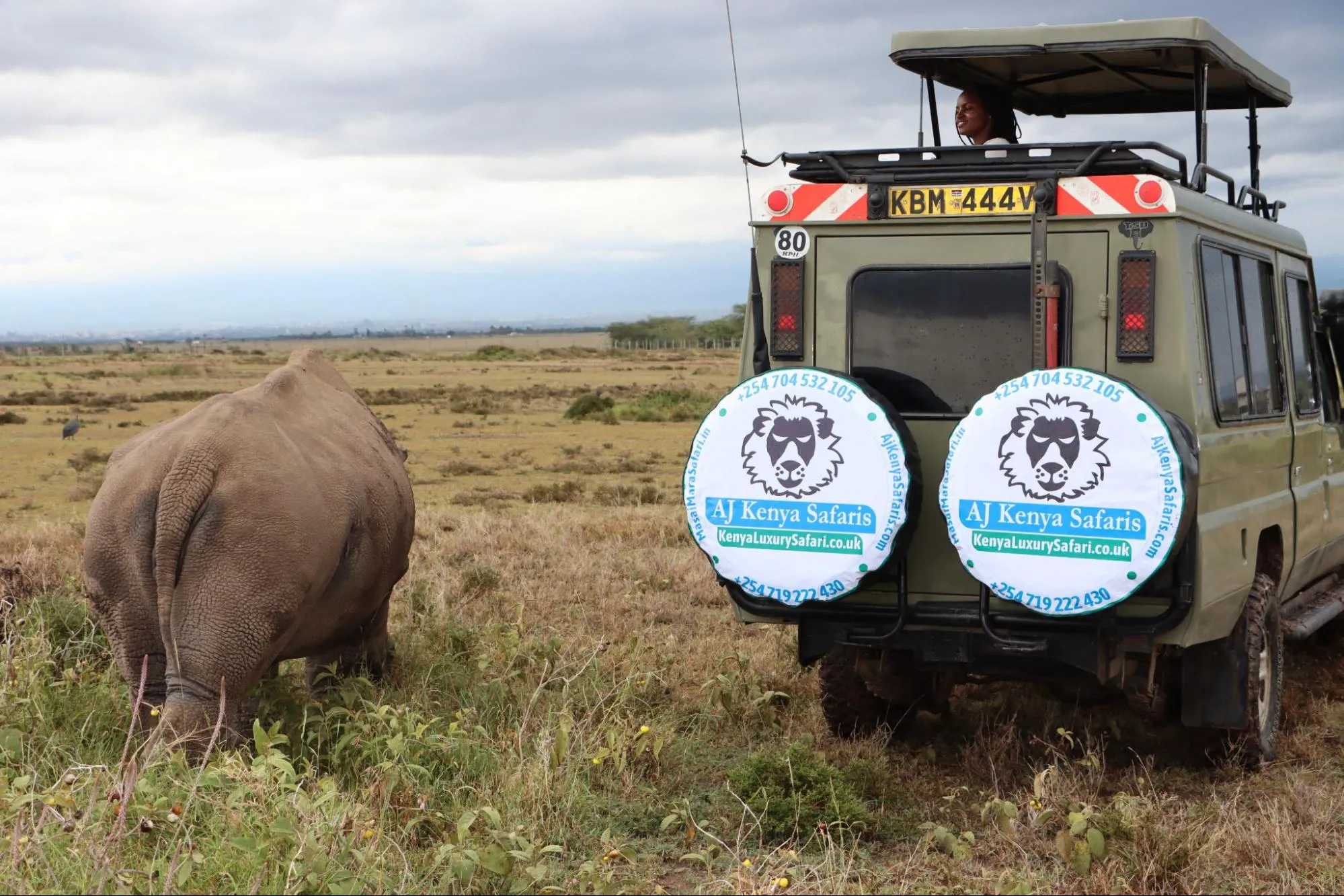
Dreaming of an East Africa safari? Kenya awaits you with its breathtaking landscapes and diverse wildlife, especially when it comes to African safaris in Kenya. Whether it’s witnessing the Great Wildebeest Migration in Masai Mara or the majestic elephants of Amboseli, Kenya offers unparalleled safari experiences. This guide covers top parks, unique safari activities, sample itineraries, and crucial planning tips, ensuring an unforgettable adventure in 2025.
How to Book Your Kenya Safari Tours
When it comes to booking a Kenya safari tour with ajkenyasafaris.com ltd, the process is simple and straightforward. You only need to reach us through our email and we will take you to the most famous safari destinations in Kenya using a 4×4 safari vehicle with an openable rooftop. Book your safari at +254-748-258-880 or james@ajkenyasafaris.com or safarioffers@ajkenyasafaris.com to book your safari.
Explore Kenya with Our Top Kenya Safari Tours
2025 TOP PACKAGES | SAFARI PRICE FROM | SEE THE ITINERARY |
From USD 1293 | ||
6 Days Kenya Wildlife Tour | From USD 1803 | |
10 Days Kenya Wildlife Safari | From USD 3038 | |
7 Days Masai Mara & Mombasa Flying Tour | From USD 3298 | |
13 Days Group Tour Safari | From USD 4060 | |
From USD 3230 | ||
5 Days Easter Holiday Package | From USD 1854 | |
2 Days Hell’s Gate & Nakuru Tour | From USD 683 | |
3 Days Huduma Day Safari | From USD 1470 | |
3 Days Luxury Masai Mara Migration Packages | From USD 2600 | |
From USD 1475 | ||
From USD 895 |
Key Takeaways
Kenya offers the ultimate safari experience with the greatest wildlife spectacles, including the iconic Great Wildebeest Migration and the Big Five across stunning national parks.
From luxury to budget-friendly options, Kenya has safari experiences tailored to every traveler, including unique activities like hot-air balloon rides and cultural visits.
Planning a Kenyan safari involves understanding costs, logistics, and conservation measures, ensuring a rewarding adventure that supports local wildlife programs and preserves natural beauty.
The most visited national parks & reserves in Kenya include Nairobi National Park, Lake Nakuru National Park, Mount Kenya National Park, Samburu National Reserve, Meru National Park, Tsavo East & Tsavo West National Parks, and the world famous Masai Mara.
Kenya safaris can also include going to sanctuaries, conservancies like Mount Kenya Wildlife Sanctuary, Ol Pejeta Conservancy, Lewa Conservancy, and others.
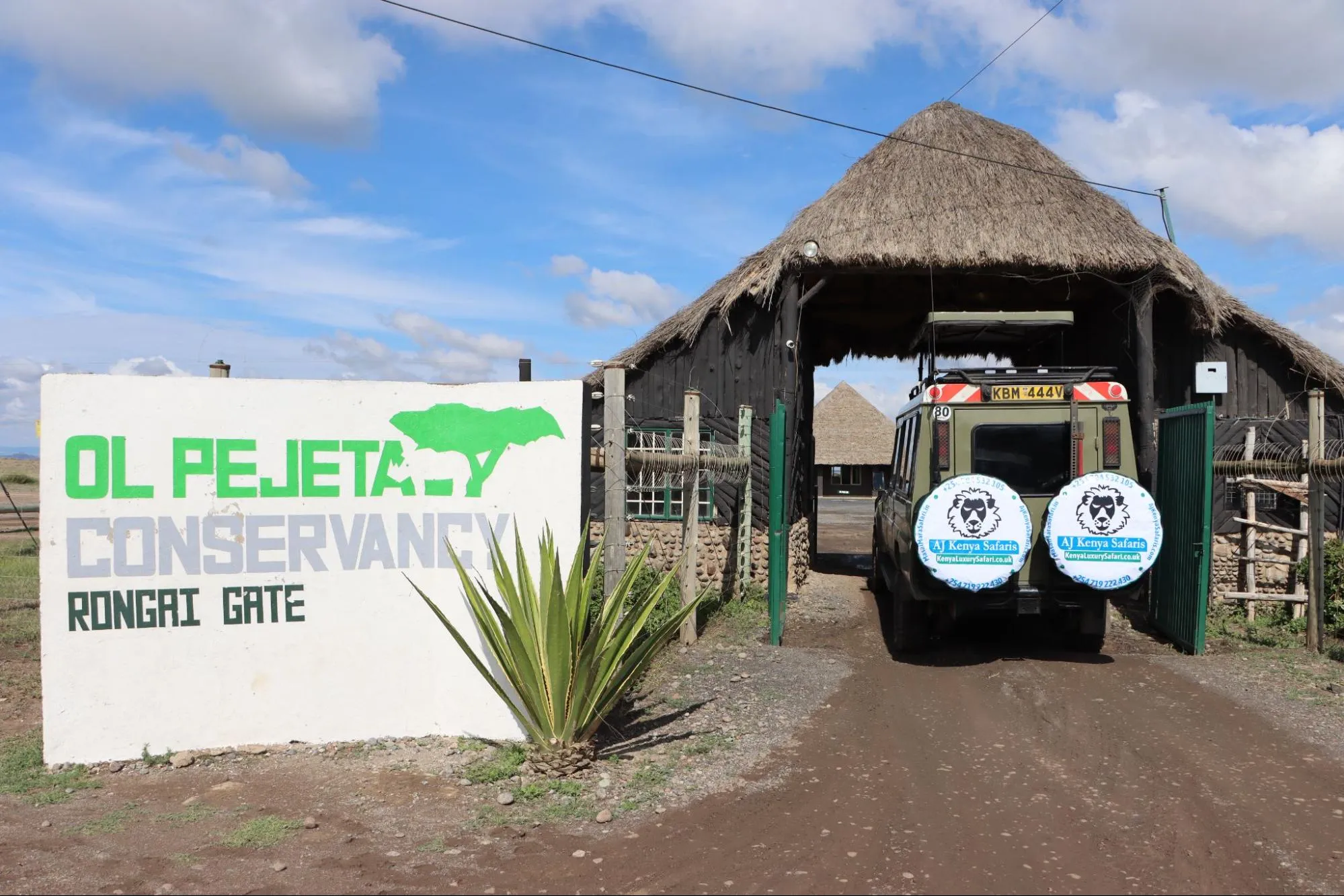
Why Choose Kenya for Your African Safari?
Kenya is a top destination in East Africa, blending natural beauty, Masai culture encounters, and outstanding game viewing. The Great Wildebeest Migration, with millions of wildebeests and zebras crossing the Masai Mara, is a breathtaking spectacle that captivates wildlife enthusiasts during an East African safari.
Kenya’s diverse wildlife includes the endangered black rhino, lions, giraffes, cheetahs, hippos, antelope species, zebras, wildebeests, and numerous bird species. The rich variety of fauna and landscapes, from mountains to coral reefs, guarantees unforgettable safari experiences.
Kenya’s historical status as the birthplace of the safari adds to its allure. The country’s equatorial climate ensures pleasant weather throughout the year, making it a convenient destination for safari enthusiasts. Large international airports make accessing a Kenya safari both exciting and hassle-free.
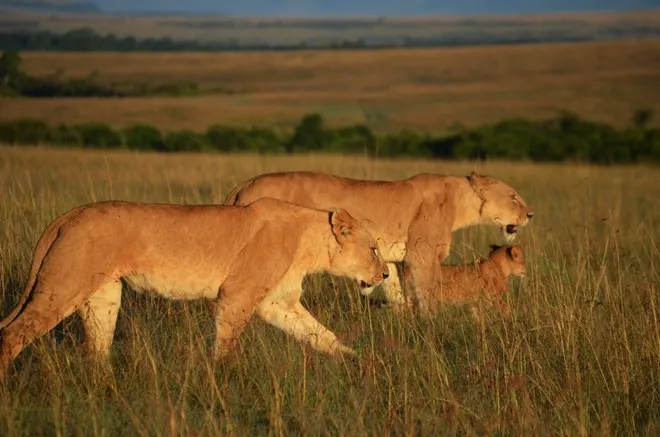
Top National Parks and Reserves in Kenya
Kenya’s national parks and reserves, among Africa’s most famous, make it a top safari destination. The Masai Mara, Amboseli, and Tsavo are particularly popular for their unique wildlife encounters and stunning landscapes. These parks, from the iconic big cats of the Masai Mara to the large elephant herds of Amboseli, offer a rich tapestry of experiences for every traveler.
Each park has its distinct charm: the Masai Mara for the Annual Wildebeest Migration, Amboseli for views of Mount Kilimanjaro, and Tsavo for its diverse landscapes and wildlife. Nairobi is the only national park in the world within a city and is only a few minutes from Nairobi airport.
Explore what makes these parks must-visits on your classic safari tour adventure of East and southern Africa.
Masai Mara National Reserve
The Masai Mara National Reserve is iconic for its endless plains and acacia trees located in southwestern Kenya. This landscape hosts a variety of wildlife, including the big cats and Big Five: lions, elephants, buffalos, leopards, and the endangered rhino. Additionally, visitors frequently spot cheetahs and hyenas, making every game drive an exciting adventure.
A highlight of the Masai Mara is witnessing the Great Migration, from mid-July to late-September, where millions of wildebeests and zebras cross the Mara River. This period provides unparalleled opportunities for wildlife photography and observation.
Guided tours by knowledgeable Maasai warriors add a cultural dimension to the Masai Mara safari experience. They provide deep insights into the wildlife and land, making safaris educational and thrilling. Early morning and late afternoon safaris maximize wildlife encounters until the park closes at 6 pm, time to engage in African night life in the chosen tented camp or lodge. Bird lovers also get to enjoy the best safari tour with both residence and migratory bird species calling Masai Mara home.

Amboseli National Park
Amboseli National Park is known for its large elephant herds and stunning views of Mount Kilimanjaro, Africa’s highest peak. This blend of abundant wildlife and breathtaking landscapes makes Amboseli a photographer’s paradise in East Africa. The iconic image of elephants with Kilimanjaro in the background attracts visitors worldwide.
Wildlife enthusiasts will find Amboseli teeming with life during Kenya tours, with early morning Kenya safaris offering the best opportunities for viewing predators in comfort of safari vehicles. Lions and cheetahs are more active during early morning safaris. The park is also known for its ‘big tuskers’ – female elephants with impressively long tusks, providing unique and memorable sightings.
Three lodges within the park, including Tulia Amboseli Camp near Kimana Gate, offer close proximity to the action. Staying within the park allows more Kenya safaris activity time, with late afternoon being ideal for observing elephant herds migrating from the swamp to the forests.
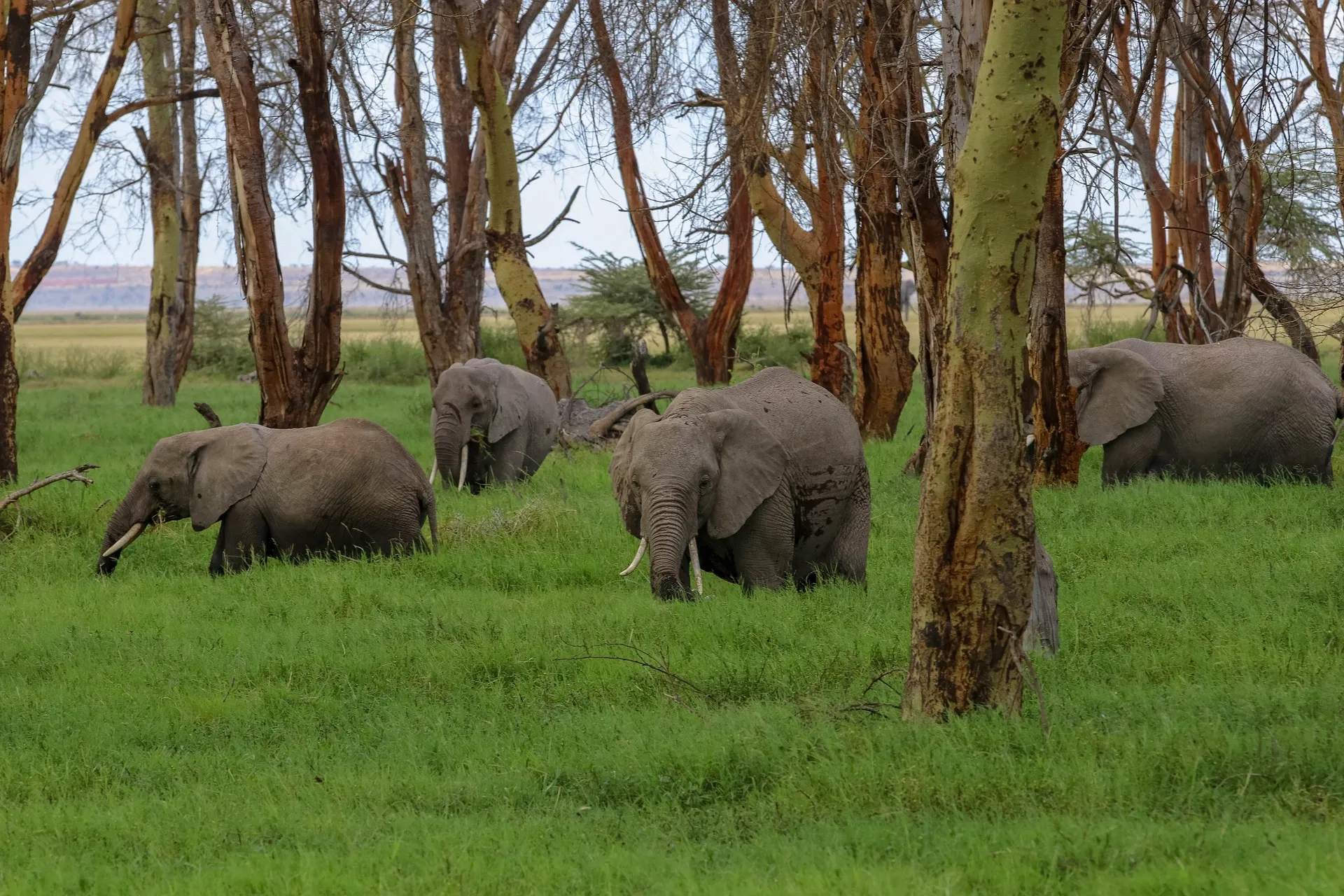
Tsavo West National Park
Tsavo West National Park, one of Kenya’s largest and oldest, is renowned for its diverse wildlife and vast landscapes. Visitors can expect a rich variety of mammals, birds, and unique ecosystems, making Tsavo West a prime destination for experiencing Kenya’s natural beauty.
Notable features include the Shetani Lava Flows and Mzima Springs, which offer unique geological formations and stunning scenery, making them ideal for a walking safari. The park’s landscapes and wildlife make it essential for any Kenya safaris enthusiast exploring Kenya’s wild side in a safari vehicle. You can combine a Tsavo West safari with a beach safari at the Indian ocean for the best Kenya tour. These safari tours begin with game drives in a safari vehicle and end with a relaxation in the beach.
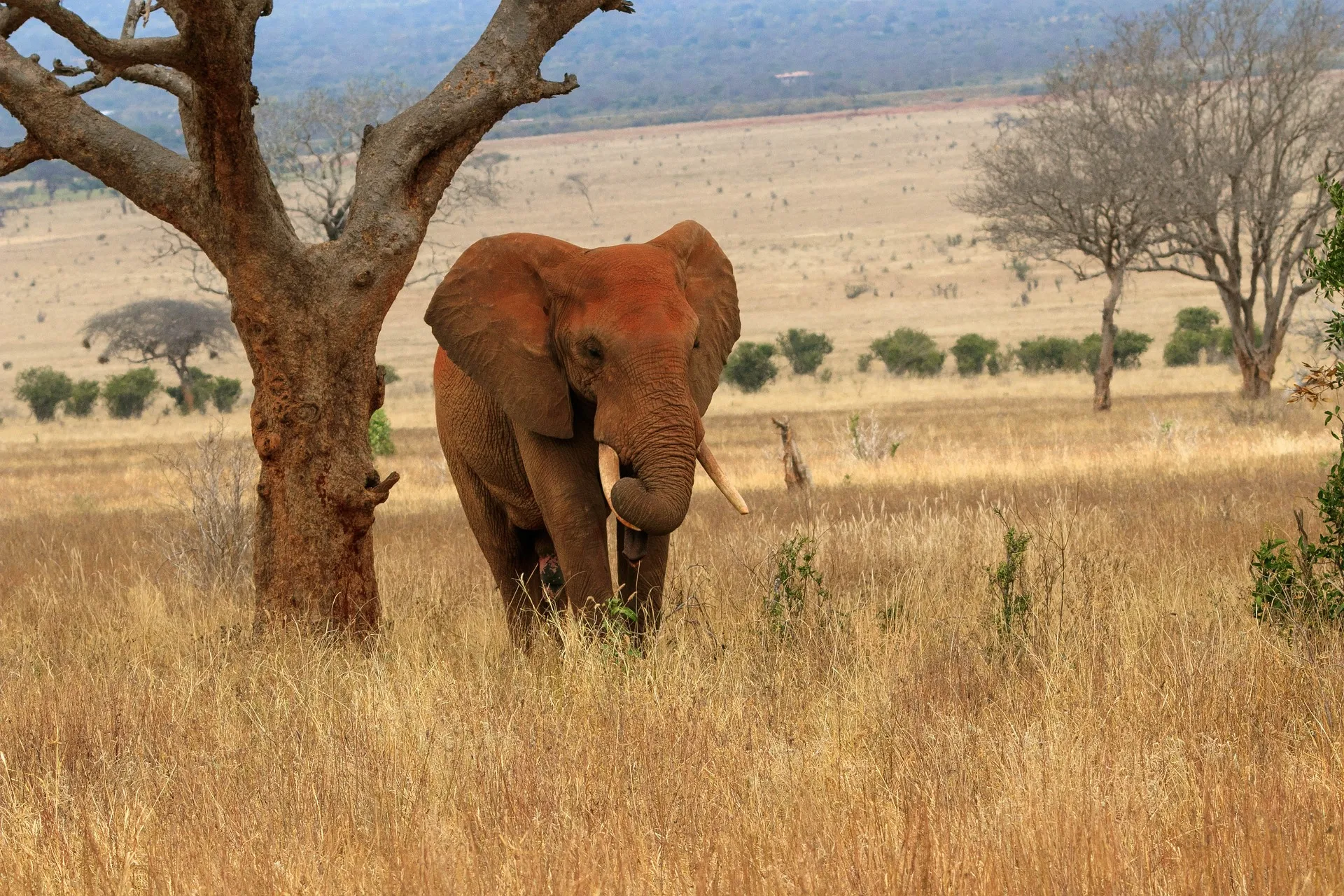
Types of Safari Experiences in Kenya
Kenya offers a range of experiences tailored to different interests and preferences. Whether seeking a luxury safari or a budget-friendly adventure, Kenya has something for everyone. Various operators offer tailor-made experiences, ensuring your safari meets your specific needs and desires.
From opulent lodges and tented camps to cultural visits and unique activities like hot-air balloon rides, Kenya’s safari options are as varied as its landscapes. Let’s explore the different types of safari experiences you can enjoy in this magnificent country.
Luxury Safaris
Luxury safaris in Kenya offer comfort, safety, and enjoyment, providing an unforgettable experience for those seeking the finer things in life.
Luxury lodges provide:
- opulent accommodations
- gourmet dining
- world-class services
- private plunge pools
All set against stunning natural backdrops.
These lodges often feature fine dining under the stars and breathtaking views, ensuring every moment of your safari is memorable. Personalized services, exclusive game reserve access, and gourmet dining make luxury safaris ideal for those seeking indulgence.
Knowledgeable guides enhance the experience with safety briefings and insights into wildlife behavior, ensuring a safe and enriching adventure.
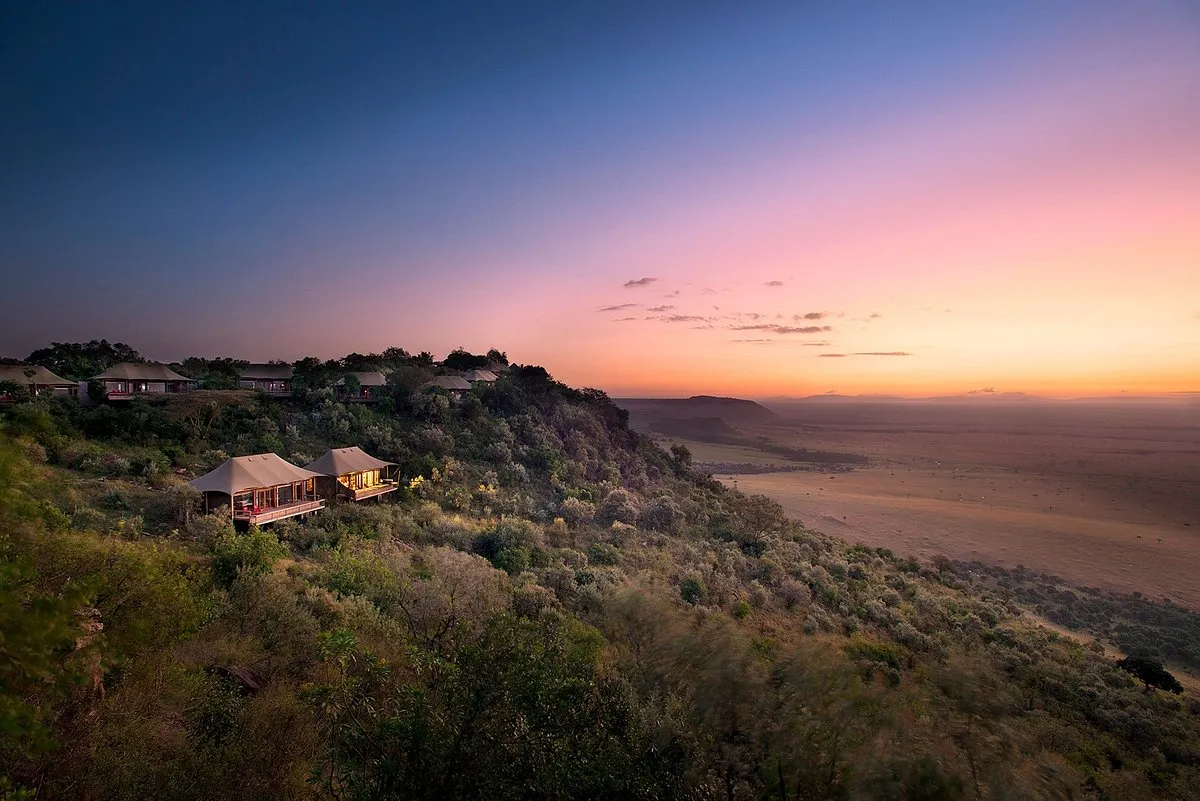
Mid-Range and Budget Safaris
Mid-range safaris in Kenya often feature comfortable lodges or tented camps balancing comfort and affordability. These accommodations let you enjoy a Kenyan safari’s splendor without breaking the bank. Camping safaris offer an economical option for those on a tighter budget while still providing an immersive wildlife experience.
Booking through local operators can be as economical as a DIY self-drive safari, with the added benefit of personalized service and local expertise. This approach ensures you get the most out of your safari experience, regardless of your budget.
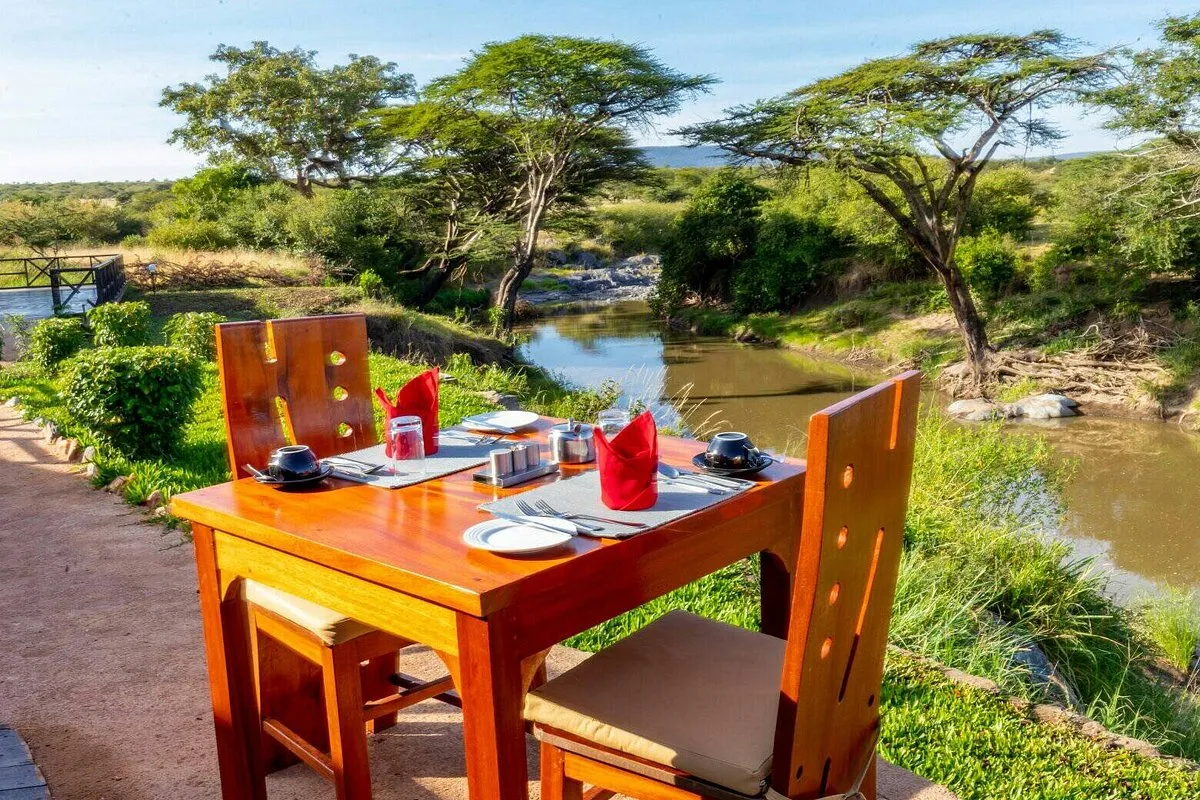
Unique Safari Activities
One enriching aspect of a Kenya safari is engaging in unique activities beyond traditional game drives. Cultural visits enable travelers to engage with local communities and traditions, providing a deeper understanding of Kenya’s heritage.
Hot-air balloon safaris provide spectacular aerial views of wildlife and lush landscapes in the Masai Mara, creating lasting memories. Boat safaris offer a unique way to explore Kenya’s waterways, providing a different perspective on the abundant animals.
Walking safaris provide an intimate experience with nature, allowing travelers to explore on foot and learn about the local ecology in an educational and exhilarating way through safari tours.
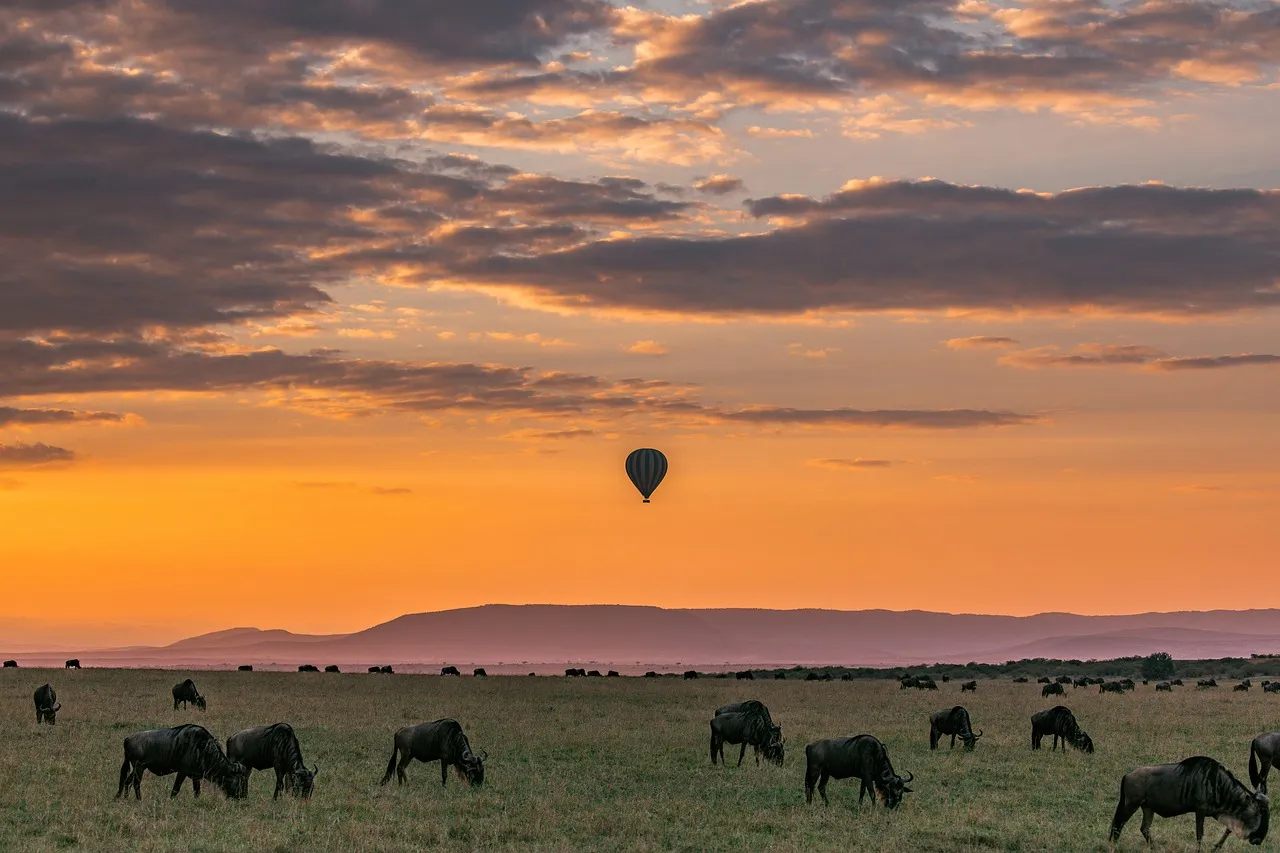
Sample Itineraries for Kenyan Safaris
Sample itineraries make planning your safari adventure easier by highlighting the best Kenya has to offer. Whether you have a few days or a couple of weeks, there’s an itinerary to match your schedule and interests. From the classic 3-day Masai Mara safari to a comprehensive 10-day Kenya and Tanzania adventure, these itineraries cover major wildlife reserves and offer diverse experiences.
These itineraries aim to maximize your time in Kenya, ensuring you get the most out of your kenya safari package experience. Here are the details of these sample safari plans.
3-Day Classic Masai Mara Safari
The 3-Day Classic Masai Mara Safari focuses on the highlights of the Masai Mara, offering an immersive experience in a short period. On Day 1, travel from Nairobi to the Masai Mara, a journey of approximately six hours. Settle in and enjoy an evening game drive.
Day 2 is dedicated to a full-day safari, offering extensive wildlife viewing opportunities. Game drives are best early in the morning, starting around 6 am when the Masai Mara gates open for optimal wildlife spotting.
With no driving time required on Day 3, enjoy another full day of safari before returning to Nairobi, ensuring a rich and fulfilling experience.

7-Day Ultimate Kenya Safari
The 7-Day Ultimate Kenya Safari includes visits to major parks like the Masai Mara and Amboseli, offering diverse wildlife experiences. Key highlights include Amboseli’s stunning views of Mount Kilimanjaro and the abundant animals of Masai Mara, Lake Nakuru, and Nairobi.
For optimal wildlife viewing, enter Amboseli National Park at 6 am. Planning at least seven days allows you to see Kenya’s key highlights effectively, ensuring a comprehensive safari experience.
10-Day Kenya and Tanzania Safari
The 10-day safari itinerary includes visits to diverse locations like Nairobi National Park, Selenkay, Amboseli, Ol Pejeta, Meru, Ol Kinyei, and the Masai Mara. This comprehensive safari showcases breathtaking wildlife and landscapes, providing a rich and varied experience.
Key attractions include spotting the Big Five in the Masai Mara, rhino tracking, and visiting the Singing Wells of the Samburu. By combining experiences in both Kenya and Tanzania, this itinerary offers an unparalleled safari adventure.

Best Time to Visit Kenya for Safari
Timing is crucial when planning a safari in Kenya. The ideal period for wildlife viewing is from June to October, which coincides with the dry season. During this time, reduced foliage and concentrated water sources make it easier to spot animals. However, personal preferences, desired activities, and weather conditions should also be considered when planning your trip.
Understanding the seasons can help tailor your trip based on the specific experiences you seek. Whether it’s witnessing the Great Wildebeest Migration or enjoying quieter parks during the wet season, Kenya offers exceptional safari opportunities year-round.
Dry Season (June to October)
The dry season is characterized by minimal rainfall, leading to sunny days and cooler nights. This period, from June to October, is the preferred time for a safari in Kenya due to the favorable weather conditions and excellent wildlife viewing opportunities.
One of the major events during this season is the Great Wildebeest Migration in the Masai Mara, offering a spectacular sight of millions of animals traversing the plains. Tsavo West National Park is also best visited during the dry season, ensuring optimal wildlife viewing as animals gather around limited water sources.
Wet Season (November to May)
The wet season, from November to May, transforms Kenya’s landscapes into vibrant green vistas, making it a picturesque time to visit. This season is also marked by the presence of newborn animals, offering a unique and heartwarming wildlife experience.
Visiting during the wet season means quieter parks and cheaper safari rates, which can be a significant advantage for budget-conscious travelers. Birdwatchers will particularly enjoy this time, as migratory species arrive in Kenya, adding to the diversity of wildlife sightings.
The short rainy season typically brings pleasant, sunny days with light rain showers, making it an enjoyable time for a safari.
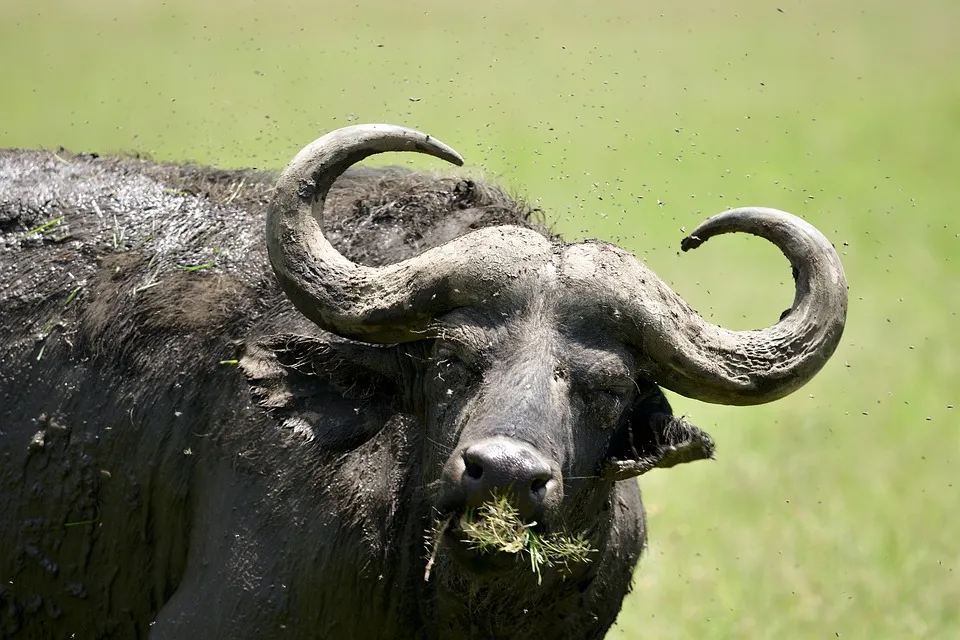
Planning Your Kenyan Safari: Costs and Logistics
Planning a safari in Kenya involves understanding the costs and logistics to ensure a smooth and enjoyable experience. Kenya is not a budget-friendly safari destination, especially with recent increases in park fees. It’s essential to consider the costs of accommodation, park fees, and transportation when budgeting for your safari.
Africa Kenya Safaris can help manage all logistics, making the planning process more straightforward. By taking care of the details, they ensure that travelers can focus on enjoying their safari adventure.
Cost Breakdown
The average daily cost for private safaris in Kenya starts at $300 per person, while shared group safaris range from $150 to $190 per person. These costs typically include accommodation, park fees, and transportation.
Factors that can affect the cost of a safari in Kenya include the level of accommodation, group size, vehicle type, and time of year. Larger groups can reduce the cost per person, while solo travelers generally pay more.
Booking Tips
Booking with local tour operators is a popular and effective way to arrange a safari in Kenya. This method not only saves time but also ensures an incredible experience. Getting quotes from recommended local safari companies can help you find the best options quickly.
Customizing your safari to fit individual needs and personal style enhances the overall experience. Once you receive a quote, confirming the booking promptly secures your safari and ensures all details are in place.
Travel Essentials
As of January 2024, travelers to Kenya need an Electronic Travel Authorisation (eTA) instead of a visa. It’s crucial to apply for the eTA in advance of your trip. Additionally, certain vaccinations are recommended before traveling to Kenya.
Packing the right items is essential for a comfortable and enjoyable safari. Recommended items include comfortable clothing, sun protection, binoculars, a camera, insect repellent, and personal medications. Due to luggage restrictions during safaris, packing lightly is advised. Sunscreen and insect repellent are particularly important for protection against the sun and pests.
During game drives, wearing multiple layers, including jumpers, jackets, and lightweight clothing, is advisable to stay comfortable.
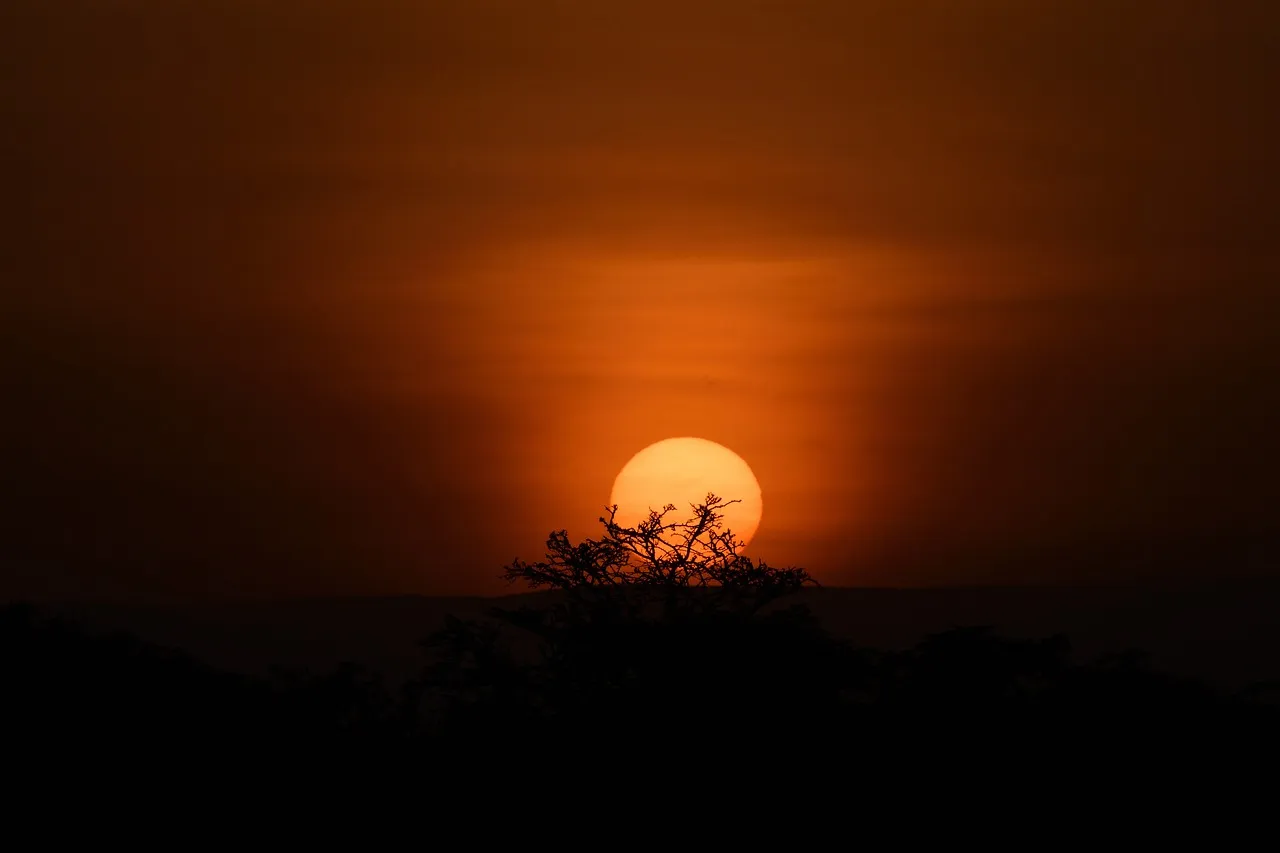
Conservation Efforts and Responsible Tourism
Conservation efforts are crucial in Kenya, given the significant wildlife population declines due to poaching and habitat loss. Kenya protects over eight percent of its land area as national parks and reserves, ensuring the preservation of wildlife and natural environments. Tourists visiting Kenya contribute to wildlife conservation efforts through the fees paid during safari stays.
Choosing sustainable tourism operators helps support conservation initiatives. These operators are committed to the preservation of Kenya’s biodiversity and ecosystems, ensuring that future generations can also enjoy the country’s natural heritage.
Wildlife Conservation Projects
Several key conservation projects in Kenya play a vital role in protecting wildlife. The Sheldrick Wildlife Trust funds anti-poaching units and builds water sources in national parks. The Giraffe Centre has successfully increased the Rothschild giraffe population from 120 to over 300 individuals through its breeding and conservation programs.
Other notable projects include the Colobus Conservation Centre, which focuses on conserving the rare Colobus monkey, and the David Sheldrick Orphanage, which rescues baby elephants and other wildlife victims of poaching and conflict. Local communities are engaged through these initiatives. They also collaborate with schools to promote awareness of wild animal conservation.
Visitors can participate in guided nature walks at the Colobus Conservation Centre to observe Columbus and other primates, fostering a connection to wild conservation.
Eco-Friendly Safari Practices
Eco-friendly practices during safaris are essential for protecting Kenya’s fragile ecosystems. Tourists are advised to minimize waste and use eco-friendly products during their safari. Community-based conservation initiatives help improve livelihoods and reduce wildlife conflict.
Collaborative projects aim to enhance wildlife protection and the management of natural resources, ensuring sustainable tourism practices. Emphasizing eco-friendly practices during safaris helps maintain the delicate balance of Kenya’s ecosystems, allowing wildlife to thrive.

Summary & FAQs of Kenya Safari Tours
Kenya offers an unparalleled safari experience, with its rich wildlife, landscapes, and unique cultural encounters. From the iconic Masai Mara to the stunning vistas of Amboseli and the vast expanses of Tsavo, each park provides a distinct and unforgettable adventure. Whether you opt for a luxury safari or a more budget-friendly option, Kenya’s safari packages cater to all preferences and budgets.
As you plan your Kenya safari tours, consider the best time to visit, the costs involved, and the logistics of your trip. By choosing responsible tourism operators and supporting conservation initiatives, you can ensure that your safari not only provides incredible memories but also contributes to the preservation of Kenya’s natural heritage. Embark on a journey that will leave you in awe of the beauty and wonder of the African wilderness.
1. What is the best time to visit Kenya for a safari?
The best time for an unforgettable safari in Kenya is during the dry season, from June to October! You’ll have the best chance to see the amazing wildlife in their natural habitat during these months!
2. What are the costs involved in a Kenyan safari?
Kenyan safaris can be incredibly affordable, starting at around $150 for group adventures or $300 for private experiences! It’s an amazing way to explore breathtaking wildlife without breaking the bank!
3. What unique activities can I experience on a Kenya safari?
You can soar above the savannah in a hot-air balloon, glide through the waters on a boat safari, or trek on foot with knowledgeable guides during walking safaris! It’s an exhilarating way to connect with Kenya’s stunning wildlife like never before!
4. What are the key wildlife conservation projects in Kenya?
In Kenya, you can get excited about the Sheldrick Wildlife Trust, Giraffe Centre, Colobus Conservation Centre, and the David Sheldrick Elephant Orphanage—they’re doing incredible work for wild conservation! Each project plays a vital role in protecting and rehabilitating endangered species, making a real difference for nature!
5. How can I book a safari in Kenya?
To book an amazing safari in Kenya, connect with local tour operators who can tailor your experience and make it unforgettable! Dive in and start planning your adventure today!
6. Kenya safaris: group safari or private safari?
Kenya safaris can be group Kenya safaris or private Kenya safaris. Group safaris can be more affordable as the costs are shared among the participants, making it a great option for budget travelers. Private safaris offer a more personalized experience with flexible itineraries that cater specifically to your preferences.
